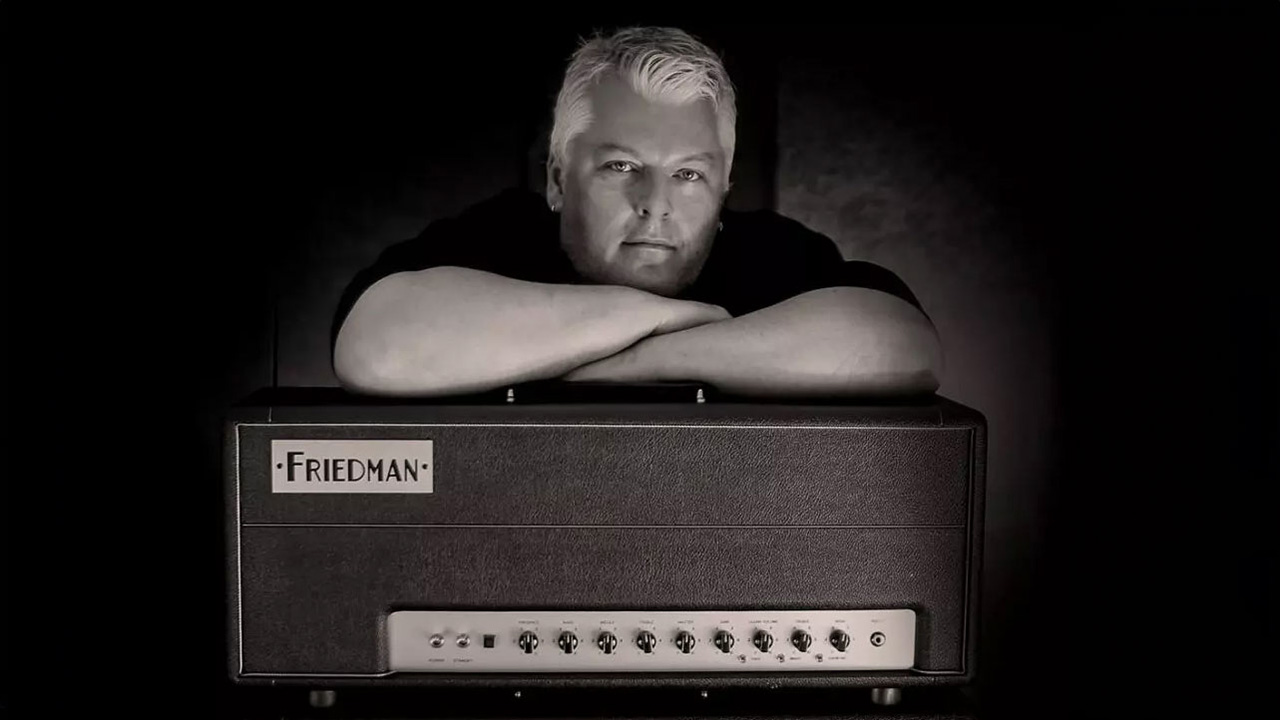
In the early ‘90s Dave Friedman became known for modding wizardry on various Marshall amps, gaining a following that included Eddie Van Halen, Steve Stevens, and George Pajon.
His exploits led him to form Marsha Amps in 2008 – which didn’t go over too well with Marshall, who told Friedman to cease and desist. He renamed the company after himself and quickly found success, establishing signature amps for Jerry Cantrell, Chris Shiflett, Steve Stevens, and others.
“I’d been doing rig work for so many years – the majority of my life, actually,” Friedman tells Guitar World. “I had an opportunity to get these products to these guys and they liked them. It’s that simple!”
He continues: “Everyone’s a little different. After a while you know what they want. I can almost design the stuff on paper and have it come out with only very minor tweaks at this point.”
With NAMM 2025 upon us, Freidman agrees that the industry is changing. Amp modeling is a very real challenge for boutique companies. He points out his company is “not so tiny anymore” before stating his case for tube amps. “Modeling is just not interesting – it’s not fun. It doesn’t give you any sort of feeling. You gotta shake the pant legs a little bit and feel that air, you know?”
Are you rolling out any surprises for NAMM 2025?
“We’re doing an artist series with Phil X from Bon Jovi – a very full-featured 20-watt amp called the PX20. It’ll be more full-featured than any other 20-watt amp we’ve had.
“A lot of ours are stripped down and have two channels; this amp has a full clean channel with full EQ. It has a drive channel with a couple of voices, lower and higher gain, and a variable boost for the drive channel, and it has its own separate master. It’s very similar to some of our pedal products. It’s really a three-channel amp.”
What else is coming up?
“One other thing we’re doing is a reasonably big deal for people who are into this stuff. If you’re familiar with the old amp modder Jose Arredondo, I always thought, ‘Hey, it’d be really cool to come out with an amp that has all those features in it.’
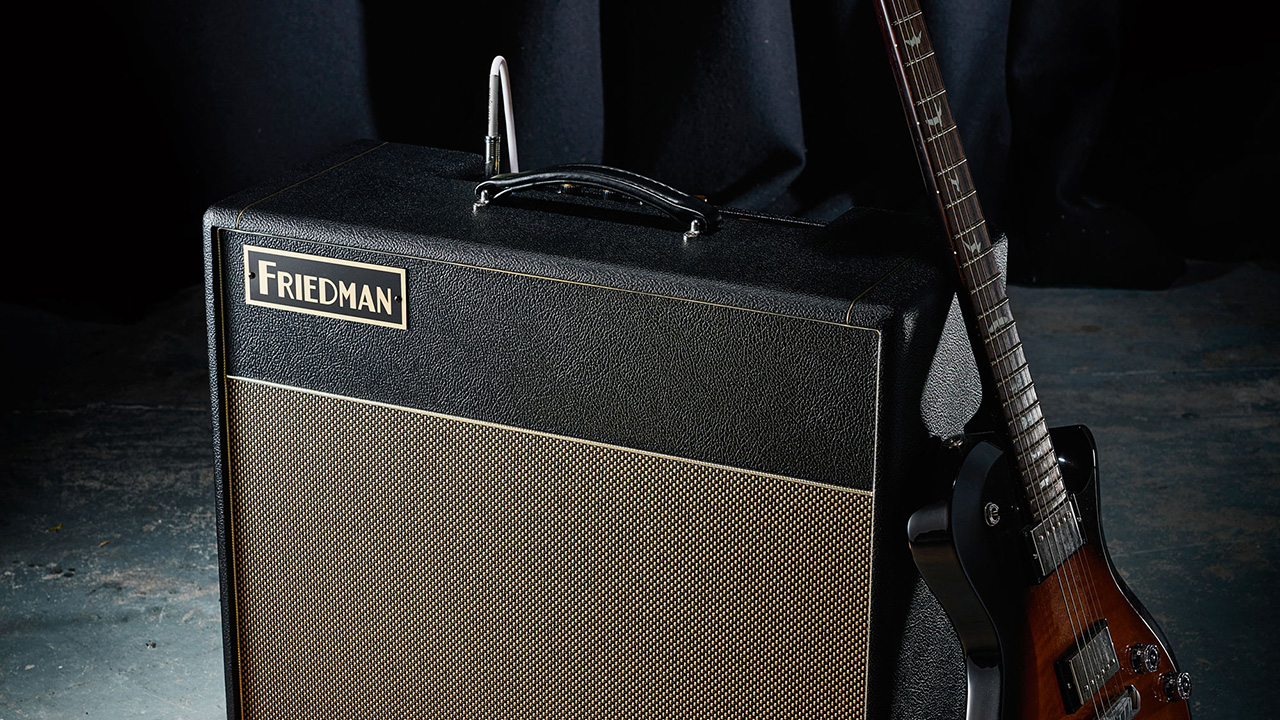
“I’ve kind of become an expert on those amps after having worked on literally hundreds of them. I wanted to do it with his daughter, Maria, and family. I wouldn’t feel right about just taking it and releasing it, like so many people do.
“So we’re going to release a 100-watt Jose amplifier with his name on it. I’m going to announce that shortly on my Tone-Talk show, and Maria is actually gonna be there – we’re gonna talk about his life a little bit.”
Why do you think artists like Jerry Cantrell, Chris Shiflett, Steve Stevens, and Eddie Van Halen have been drawn to Friedman?
“Eddie didn’t actually use my amps, but I did a lot of work for Eddie – rig work and things like that, and I did service a lot of his old amps. But other than that, like you said, we have guys like Steve Stevens, Jerry Cantrell, Bill Kelliher, Phil X, and Chris Shiflett. The list goes on!
“But it’s just the sound in my head, really. I saw nothing out there that I really liked. What I really loved was old, vintage Marshalls; and I just kind of ran with the ideas that I had.”
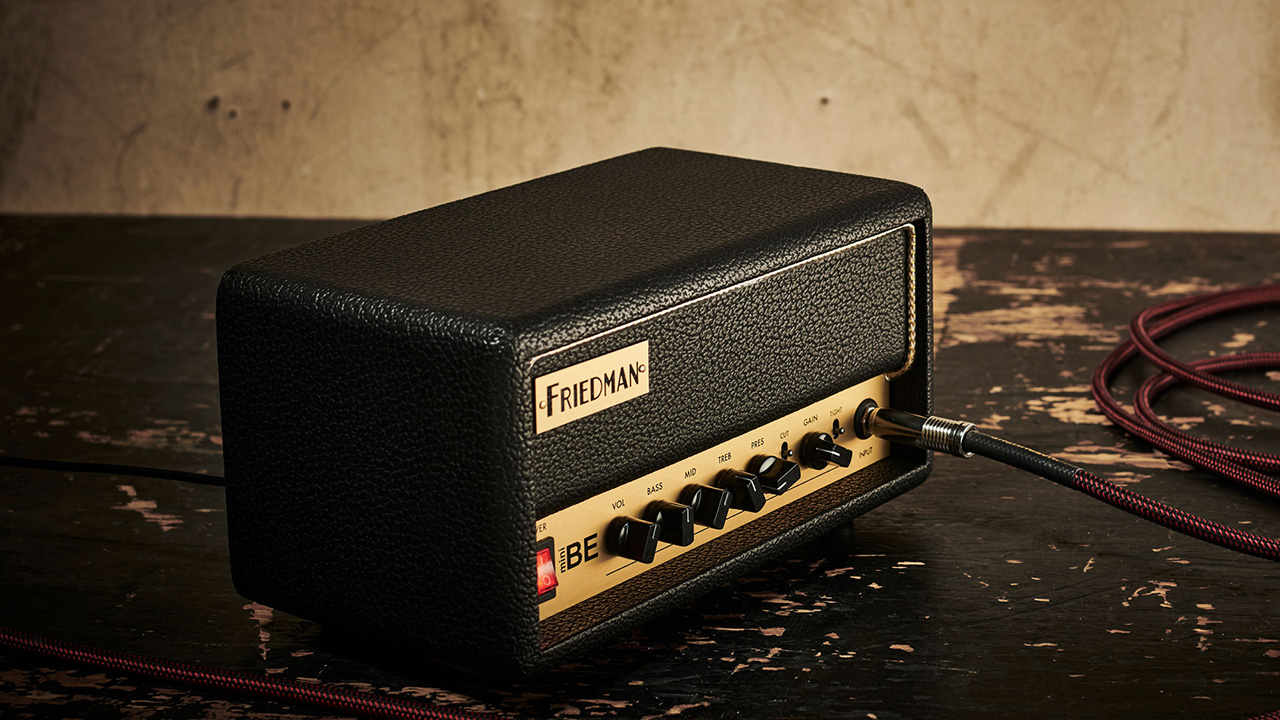
What went into building Eddie’s rigs?
“The most important thing is you always had to listen to him and really let him tell you what he wanted. You should never give your opinion unless asked, because what you think is right might not be right for an artist.
“A certain artist might like it totally backward from what you think it should be. That might be part of his thing, his sound, you know? So, you really just have to let them tell you what it is they’re looking for.”
All these modelers are based on tube amps, so they still need tube amps to get the sound
Does the process change when building an amp for a player like Bill Kelliher or Jerry Cantrell versus someone like Chris Shiflett?
“The process is sort of the same; they’re just going for different tones. Bill Kelliher would have a much heavier tone compared to Chris Shiflett, who’s sort of a mainstream hard rock sound – almost a more classic sound.
“But it’s really the same thing that I said about rigs: listening to the artist, giving them prototypes then letting them go, ‘I don’t like this, I don’t like that, I want it a little heavier here, I want it a little brighter or darker here.’”
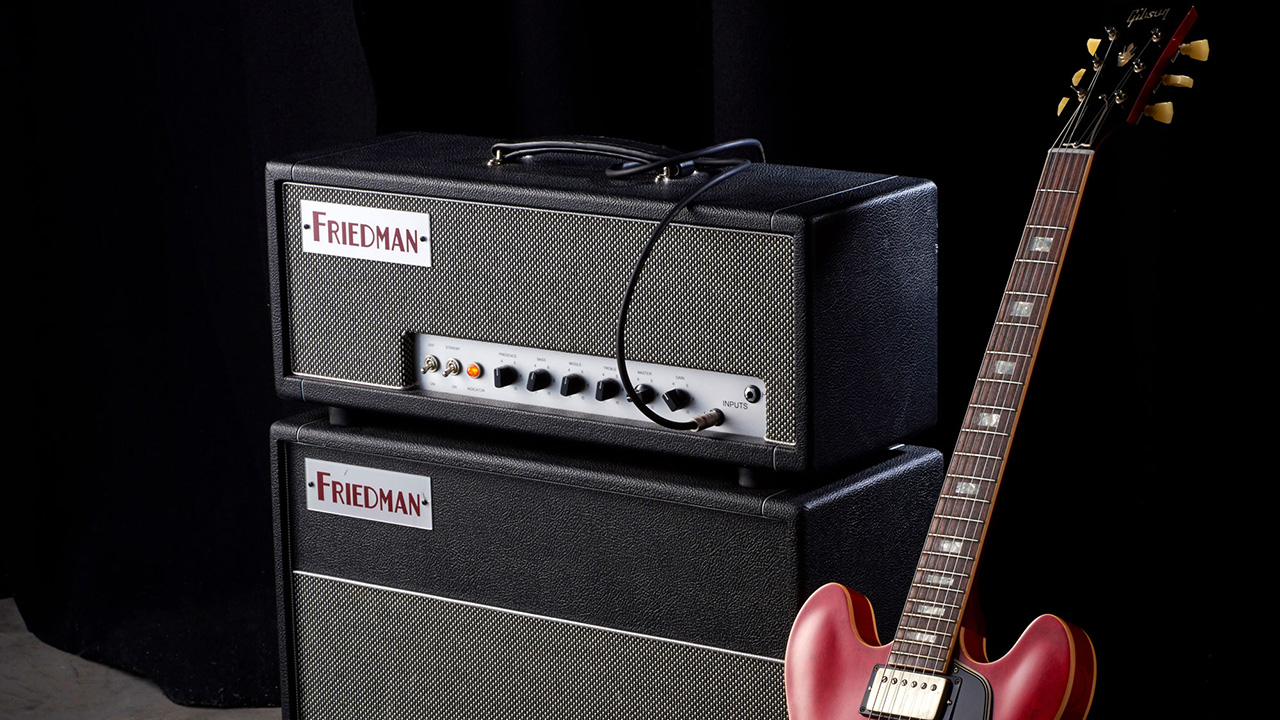
As a tube amp purist, what are your thoughts on the rise of amp modeling?
“Ultimately, I think tube amps are used in the studio a ton, and maybe less than they used to be live. Of course, it depends on the style of the band. I think modelers don’t necessarily work for certain styles of music, especially if you’re talking about more rootsy stuff.
“I prefer to have stage volume; I prefer tube amps because they sound a lot better. But all of these modelers are based on tube amps, so they still need tube amps to get the sound, you know?”
Has the rise in amp modeling impacted Friedman’s bottom line?
“I haven’t really seen a drop in sales. It’s still going and still selling. This past year we’ve come out with the Plex, the simplest amplifier I make. It sold massively – just massively. But there’s no features, you know? Maybe that says something.”
There’s certainly a section of the guitar-playing population who crave plug-and-play simplicity as opposed to loads of dials and switches.
“Exactly. I find it kind of funny – I go to work all my life for all these sounds and different amps; then I make the Plexi, which was easy! We’ve delved into this market where people wanted simplicity and a direct solution.”
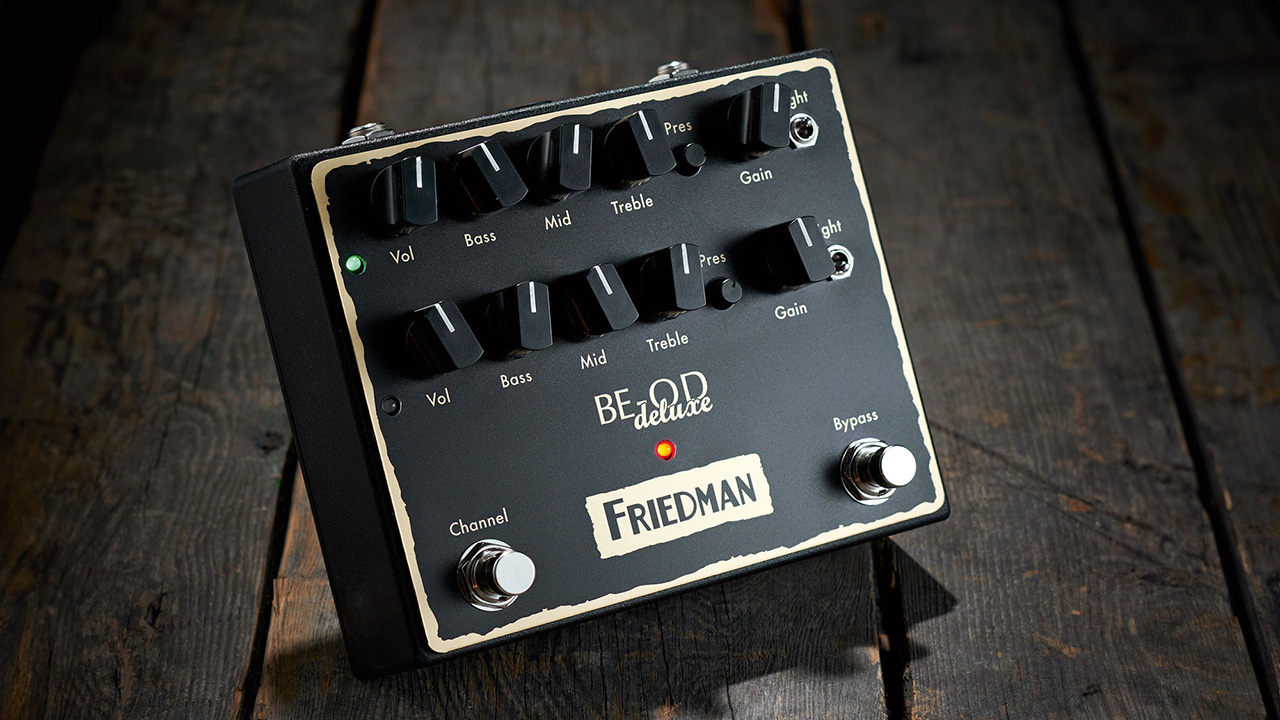
What are your biggest challenges as a boutique amp maker competing with larger companies?
“At this point we’re a relatively large company; we're maybe in the mid-ground now. We kind of have higher prices, but we're more hands-on. When you email customer services at Friedman, you get me!
“What you need in this business is money to take it to the next step and take it out of the garage, order what you need, and do what you need to sell it. You need money that keeps you alive; and a lot of times smaller companies can’t find that.
The whole modeling problem is that it’s sort of a race to the bottom
“So we partnered with Boutique Amps Distribution, which makes a variety of amplifiers. We’re one of the largest brands under the umbrella, They do the marketing, accounting, and manufacturing of all the products. I’m still very hands-on – I test every amp that leaves the factory. Once a week I go and test a whole rack of amps.”
Circling back to NAMM 2025, Marshall and Fender are returning. What are your thoughts there?
“I noticed that. A lot of companies are coming back this year. I think every year since the pandemic, it’s started to get back to where it was. But is NAMM needed? I don’t know!
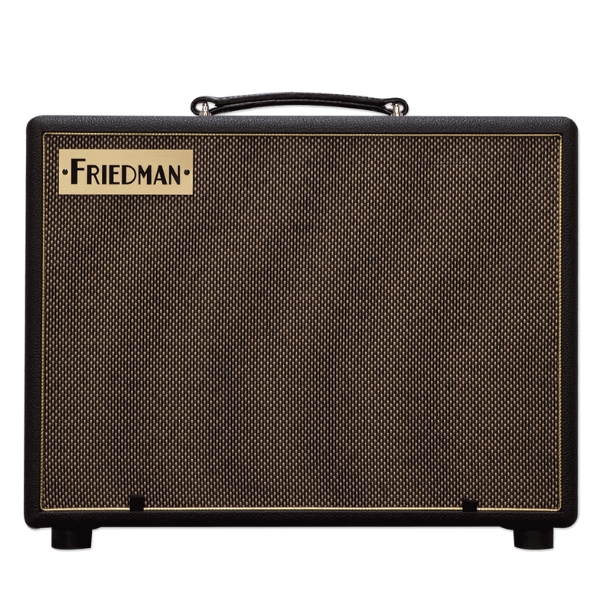
“It used to be a trade show for dealers; there were a lot of companies selling directly and doing different things. Now it’s become more of a consumer show. But even though it’s a lot of work for me, I like NAMM. I see a lot of friends that I only see once a year.”
Where do you see the amp business going next?
“It should be interesting to see how the whole modeling thing plays out. The problem is that it’s sort of a race to the bottom. As other companies come up with their versions of things at a cheaper price, the next company has to come up with their version at an even cheaper price. I don’t know how that’s going to play out.
“So far, it seems like tube amps are still selling. The vast majority of people that buy boutique amps play in their house. They’re not really using them in a professional format. It’s like buying a nice car – they’re not race car drivers, right?”
Are tube amps here to stay?
“There’s still a market. People at home don’t want to sit there and play through a model. The more tactile feel of an amp is better; I’m a staunch believer in that. I don’t believe in the quiet stage – I don’t believe in living in your in-ears.

“I’ll hear people say, ‘You can get a much better sound that way. I can control the sound and get a great front-of-house sound.’ Then you hear it, and you're like, ‘Yeah – you didn’t; you didn’t at all. It sounds like ass!’
“It doesn’t have to be loud; just some stage volume. Using real amps, you hear it out front; you’re like, ‘Now, that sounds good!’ I grew up with amps in a room. There’s something about that feeling you get when you play that way versus playing with animators, where you don't have something that moves you and moves some air behind you.”
- Explore the Friedman Amplification product range.







